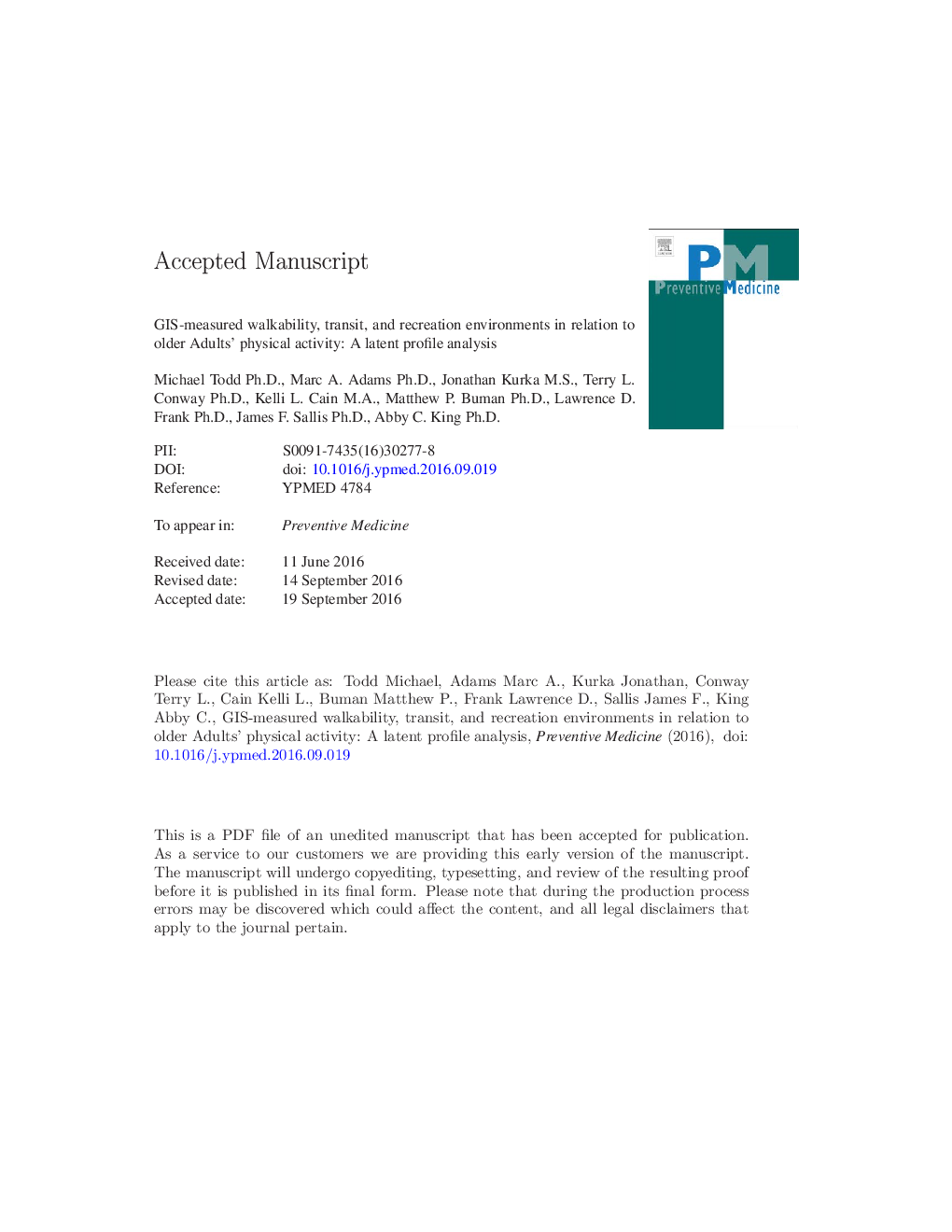| کد مقاله | کد نشریه | سال انتشار | مقاله انگلیسی | نسخه تمام متن |
|---|---|---|---|---|
| 8693831 | 1581621 | 2016 | 26 صفحه PDF | دانلود رایگان |
عنوان انگلیسی مقاله ISI
GIS-measured walkability, transit, and recreation environments in relation to older Adults' physical activity: A latent profile analysis
دانلود مقاله + سفارش ترجمه
دانلود مقاله ISI انگلیسی
رایگان برای ایرانیان
کلمات کلیدی
موضوعات مرتبط
علوم پزشکی و سلامت
پزشکی و دندانپزشکی
طب مکمل و جایگزین
پیش نمایش صفحه اول مقاله

چکیده انگلیسی
An infrequently studied question is how diverse combinations of built environment (BE) features relate to physical activity (PA) for older adults. We derived patterns of geographic information systems- (GIS) measured BE features and explored how they accounted for differences in objective and self-reported PA, sedentary time, and BMI in a sample of older adults. Senior Neighborhood Quality of Life Study participants (N = 714, aged 66-97 years, 52.1% women, 29.7% racial/ethnic minority) were sampled in 2005-2008 from the Seattle-King County, WA and Baltimore, MD-Washington, DC regions. Participants' home addresses were geocoded, and net residential density, land use mix, retail floor area ratio, intersection density, public transit density, and public park and private recreation facility density measures for 1-km network buffers were derived. Latent profile analyses (LPAs) were estimated from these GIS-based measures. In multilevel regression models, profiles were compared on accelerometer-measured moderate-to-vigorous PA (MVPA) and sedentary time and self-reported PA, adjusting for covariates and clustering. Analyses were conducted in 2014-2015. LPAs yielded three profiles: low walkability/transit/recreation (L â L â L); mean walkability/transit/recreation (M-M-M); and high walkability/transit/recreation (H â H â H). Three PA outcomes were more favorable in the HHH than the LLL profile group (difference of 7.2 min/day for MVPA, 97.8 min/week for walking for errands, and 79.2 min/week for walking for exercise; all ps < 0.02). The most and least activity-supportive BE profiles showed greater differences in older adults' PA than did groupings based solely on a 4-component walkability index, suggesting that diverse BE features are important for healthy aging.
ناشر
Database: Elsevier - ScienceDirect (ساینس دایرکت)
Journal: Preventive Medicine - Volume 93, December 2016, Pages 57-63
Journal: Preventive Medicine - Volume 93, December 2016, Pages 57-63
نویسندگان
Michael Ph.D., Marc A. Ph.D., Jonathan M.S., Terry L. Ph.D., Kelli L. M.A., Matthew P. Ph.D., Lawrence D. Ph.D., James F. Ph.D., Abby C. Ph.D.,